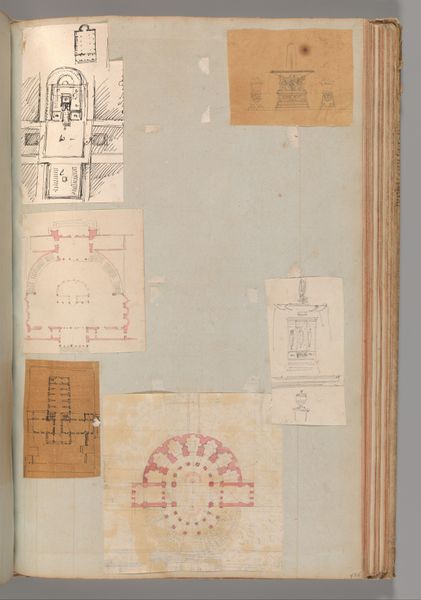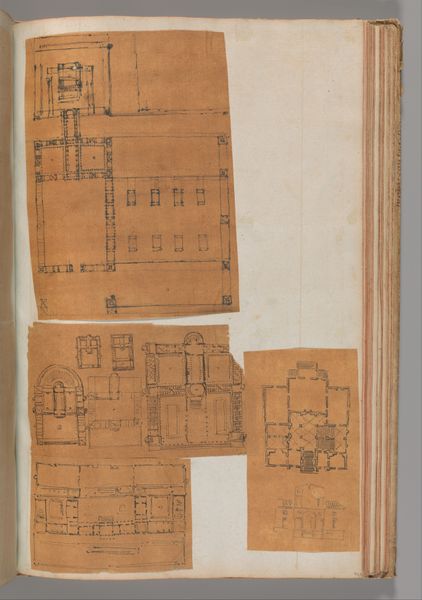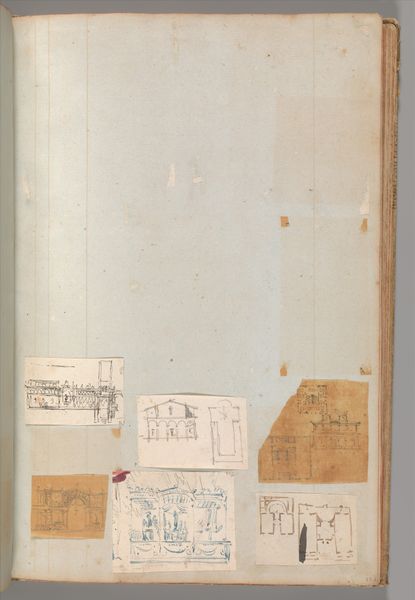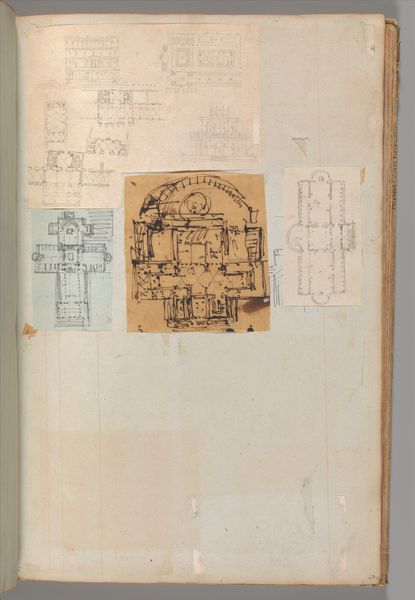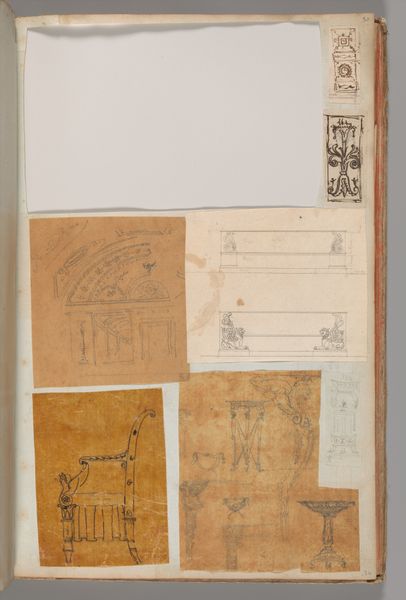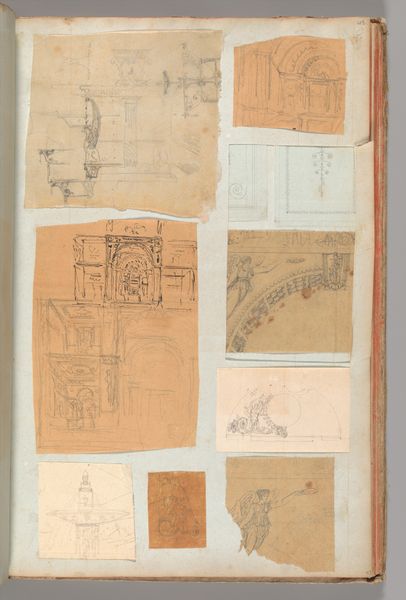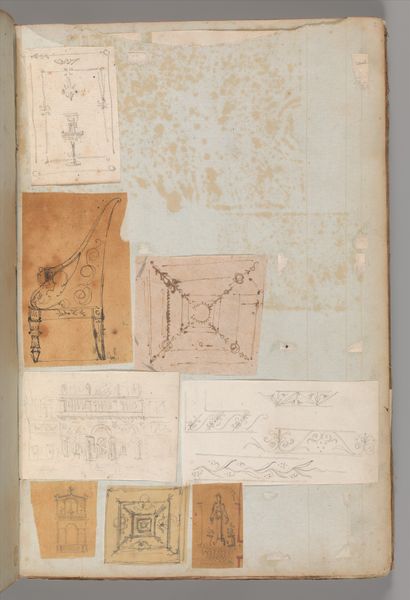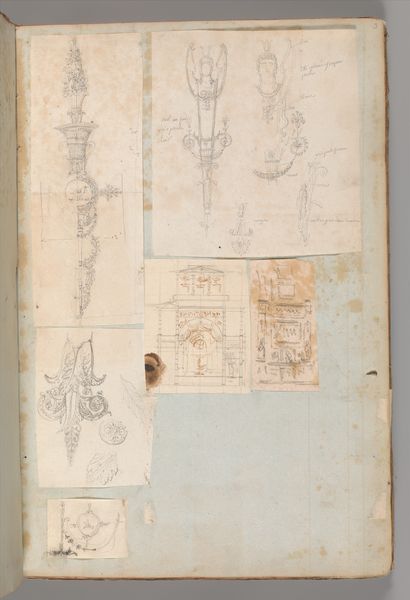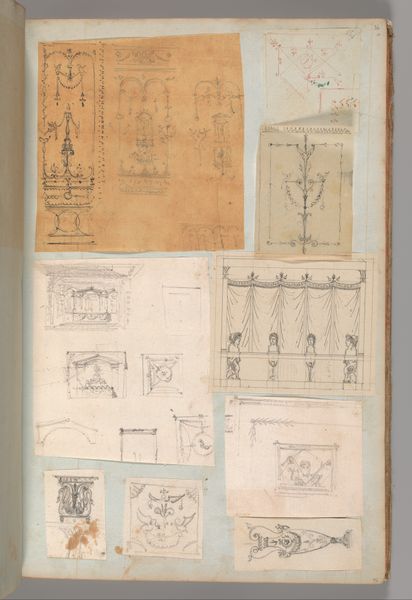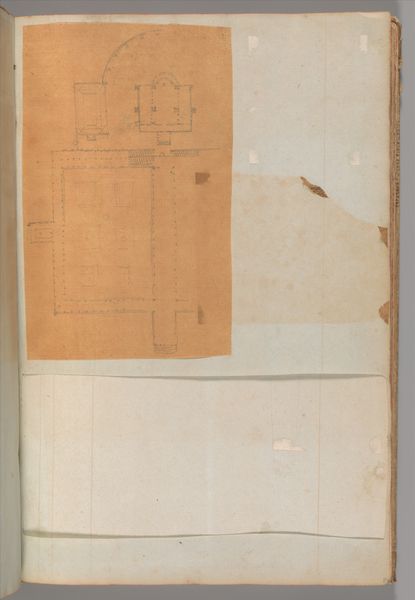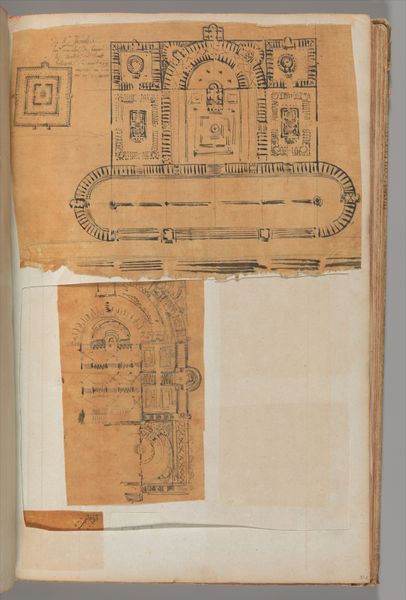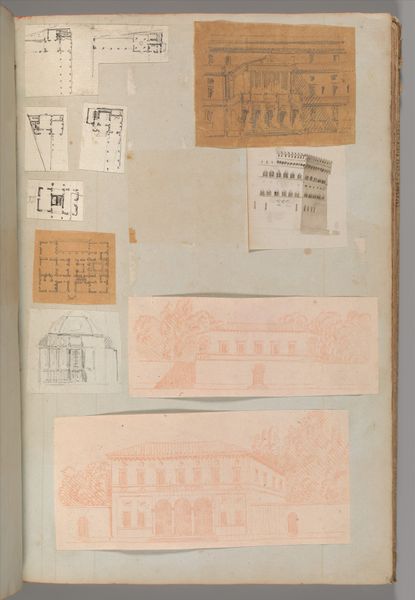
Page from a Scrapbook containing Drawings and Several Prints of Architecture, Interiors, Furniture and Other Objects 1795 - 1805
0:00
0:00
drawing, print, paper, ink, architecture
#
drawing
#
neoclacissism
# print
#
paper
#
ink
#
architecture
Dimensions: 15 11/16 x 10 in. (39.8 x 25.4 cm)
Copyright: Public Domain
Curator: It feels like stumbling into an architect's dream journal. Faint outlines of facades, doorways leading to nowhere, all floating on a creamy sea of paper. There's something both exhilarating and slightly melancholic about it. Editor: This is a page from a scrapbook by Charles Percier, created sometime between 1795 and 1805. It’s a medley of drawings and prints, all interwoven on paper using ink. We find it at the Metropolitan Museum of Art in New York. What we are viewing gives insight into architectural neoclassicism at the turn of the 19th century. Curator: Ah, Percier! Of course. That explains the confident lines, the emphasis on classical forms. I get a sense that the artist reveled in ornamentation—the scrolls, the columns, all these embellishments. Is that brown ink that he has applied for the broad structure? Editor: Yes. And beyond being aesthetically driven, we see in this page a dialogue with architectural and design publications which experienced explosive growth during this period. These designs could easily be seen to communicate status, reflecting emerging bourgeois desires. Curator: Interesting. It almost reads like a Pinterest board from the period, where ideas are gathered and presented to future clientele! Seeing this interplay between social aspiration and artistic process, I think there's something deeply resonant about encountering an artist's unbridled curiosity. Editor: Precisely! The apparent disorder reflects the socio-political chaos of Revolutionary France giving way to Napoleonic aspirations of Empire, and it also encapsulates that transition from old modes of aristocratic life into this newly burgeoning social identity. Curator: Looking at all those different scales crammed together, a question bubbles in me...how many of these ideas were put into reality? Are these records of built form or simply fanciful ideas from Percier's imagination? Either way, my brain sparks with ideas and a feeling of artistic and individual liberation. Editor: It's that liminal space – existing as both blueprint and daydream, functional design and artistic flourish, that renders it truly unique. Ultimately, this seemingly casual arrangement challenges how we classify the very idea of what we now recognize as artistic intent in the modern museum era. Curator: It truly is more than meets the eye at first glance; such a rich little portal into history. Editor: Indeed. It’s amazing how a simple scrapbook page can open up such grand vistas.
Comments
No comments
Be the first to comment and join the conversation on the ultimate creative platform.


